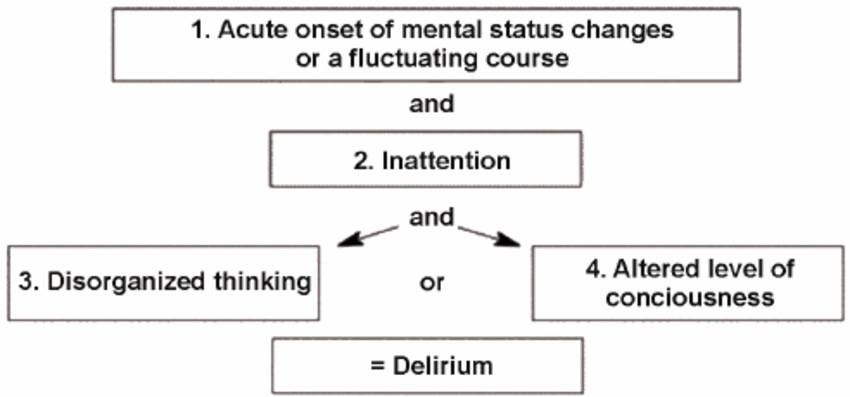The Confusion Assessment Method for the Intensive Care Unit (CAM-ICU) is a new and innovative way to assess and monitor confusion in critically ill patients. CAM-ICU is a simple tool that can be used to quickly identify patients who are confused and at risk for further cognitive decline. In this article, we will discuss what the CAM-ICU is, how it works, and some of the benefits of using this tool in the ICU setting.
Contents
What Is CAM-ICU?
The Confusion Assessment Method for the Intensive Care Unit (CAM-ICU) is a structured instrument used to identify delirium in critically ill patients. It has excellent inter-rater reliability and concurrent validity when compared to other established methods. It is believed that the CAM-ICU can detect delirium up to two days earlier than other screening tools.
Dr. Ely developed the CAM-ICU through financial support from various sources, including the Alliance for Aging Research, the National Institute of Health, and the VA Tennessee Valley Healthcare System Geriatric Research Center. It is important to note that the CAM-ICU should not replace a full clinical assessment of delirium, but rather be used as a screening tool.
What Are The Components Of CAM-ICU?
The CAM-ICU consists of four main components:
- Inattention: Does the patient have difficulty focusing or keeping track of what is going on around them? This can be evidenced by things like not responding when their name is called or having trouble following simple commands.
- Disorganized thinking: Does the patient have trouble thinking in a logical, sequential fashion? This can be evidenced by rambling or incoherent speech, or difficulty completing tasks that require multiple steps.
- Altered level of consciousness: Is the patient’s level of consciousness different from what is normal for them? This can be evidenced by things like drowsiness, lethargy, or confusion.
- Autonomic instability: Does the patient have trouble regulating their autonomic nervous system? This can be evidenced by things like sweating, tachycardia, or hypertension.
These components are then used to generate a score of 0-4, with 4 being the most severe. A patient is considered to be confused if they have a score of 2 or more. It is believed that the CAM-ICU is more sensitive to confusion than other similar tools, such as the Richmond Agitation-Sedation Scale.
If you are concerned that your loved one may be confused, the best thing to do is to speak with their doctor or nurse. They will be able to assess the situation and provide you with more information.
How Is The CAM-ICU Used?
 The CAM-ICU can be used in a number of different ways. It can be used to screen patients for confusion, monitor patients for changes in their level of confusion, and evaluate the effectiveness of treatments for confusion.
The CAM-ICU can be used in a number of different ways. It can be used to screen patients for confusion, monitor patients for changes in their level of confusion, and evaluate the effectiveness of treatments for confusion.
The CAM-ICU can be used with patients of all ages. It is a brief, easy-to-administer assessment that does not require any special equipment. Moreover, the CAM-ICU has been shown to be reliable and valid in a number of different studies.
It can be administered by any healthcare professional who is trained in its use. The assessment takes about 5 minutes to complete. And, it can be administered repeatedly over time to monitor changes in a patient’s level of confusion.
What Does The CAM-ICU Measure?
The CAM-ICU measures three domains of cognitive function: orientation, short-term memory, and attention/calculation. Orientation is assessed by asking the patient to state their name, the current date, and where they are. Short-term memory is assessed by having the patient recall a three-word list. Attention and calculation are measured by asking the patient to count backward from 100 to 7s.
If you are having conditions related to the critical illness, or if you are on a ventilator for longer than 24 hours, your doctor may recommend a Confusion Assessment Method for the ICU (CAM-ICU). The CAM-ICU is a brief bedside assessment that can be used to identify patients with acute brain dysfunction, also known as delirium.
What Are The Benefits?
There are several benefits to using CAM-ICU, including:
- Speed: It is a quick and easy assessment to administer, taking only 5-10 minutes.
- Reliability: The method has been shown to be reliable in multiple studies.
- Validity: The method has been shown to be valid in multiple studies.
- Generalizability: CAM-ICU can be used in a variety of ICU settings and has been shown to be generalizable across different nations, cultures, and languages.
- Simplicity: The method is easy to learn and use, making it ideal for busy ICU staff.
- Flexibility: CAM-ICU can be used with patients of all ages, in both the medical and surgical ICU.
- Efficacy: CAM-ICU has been shown to be efficacious in detecting delirium in the ICU.
- Guide Decision-Making for Interventions: This might be the most important reason to use CAM-ICU. The results of this assessment can help guide decisions about whether or not a patient needs more intensive monitoring or additional interventions.
- Improve Outcomes: There is evidence that using CAM-ICU can improve outcomes, such as reducing the length of stay and ICU mortality.
So you can see the different benefits of using CAM-ICU in the ICU. This assessment can help you detect delirium quickly and easily, as well as guide decisions about interventions. Ultimately, this can lead to improved outcomes for your patients. Therefore, if you are thinking about using CAM-ICU in your ICU, be sure to consider these benefits.
What Are The Drawbacks?
 There are a few potential drawbacks to using CAM-ICU, which include:
There are a few potential drawbacks to using CAM-ICU, which include:
- Time: As with any assessment, there is always the potential for it to take up too much time.
- Reliability: There is always the potential for error when conducting any assessment.
- Training: Those who are conducting the assessment must be properly trained in order to minimize potential errors.
- Complexity: The CAM-ICU can be complex, and therefore difficult to understand and use for some individuals.
Despite these potential drawbacks, CAM-ICU is still considered to be a valuable assessment tool for those working in the ICU setting. If you have any questions about using CAM-ICU, be sure to speak with your supervisor or another trusted individual who can provide guidance.
This can be a great assessment tool for your ICU. But make sure you train your staff on it well to avoid any errors. It will help ensure that the information gathered is accurate and reliable.
Conclusion
In conclusion, the CAM-ICU is a reliable and valid method for the detection of delirium in critically ill patients. And that can be used by both trained clinicians and research staff with high levels of agreement. The use of the this tool has important implications for patient care. As delirium is associated with increased morbidity and mortality in this population.
If you suspect that your loved one may be experiencing delirium, it is important to seek medical attention as soon as possible. Early detection and treatment of delirium can improve patient outcomes and quality of life.
Physical Therapy has always been proven to help patients recover from pain. Hence, if you’re experiencing Back pain, Shoulder pain, Knee pain, Neck pain, Elbow pain, Hip pain, or Arthritis pain, a physical therapist at MantraCare can help: Book a physiotherapy session.


